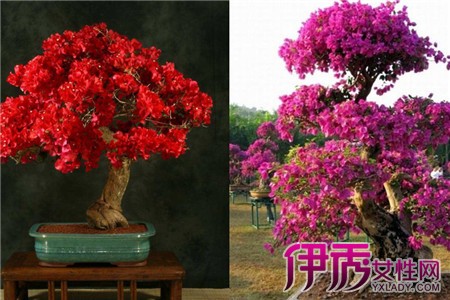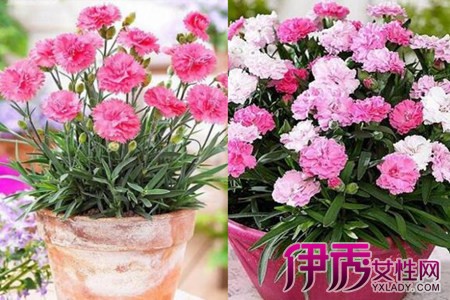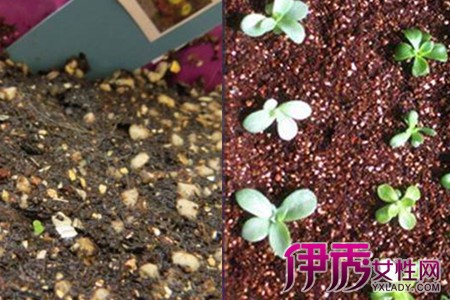The culture method of triangular plum bonsai is revealed, and the popular watering method is used.

Bougainvillea generally blooms at the turn of spring and summer. This flower is also called "winter jasmine" in some places. Bougainvillea growing outdoors generally forms a beautiful landscape when it grows. In particular, many flower lovers will put up a shed or pavilion to let the bougainvillea wrap around it. Every time it blooms, many people will be attracted to walk and chat under the pavilion, because chatting under the flowers is really too happy. It is also interesting to cultivate triangular plum plants into potted plants indoors.
When potted plants grow indoors, they must pay attention to regular pruning of flowering branches to keep them in their original shape, whether they are like Huangshan pine trees or rockery shapes. And pay attention to regular fertilization, generally once a week, should not be too much, too much fertilization will make the soil scab, so that the roots in the soil can not do a good job of photosynthesis, is not conducive to the growth of triangular plum. And after pruning branches in August, they don't need to be pruned because they grow slower when the weather gets colder.
Bougainvillea is a plant that likes sunlight very much, so Bougainvillea potted plants must have sufficient sunlight, choose a place that can direct sunlight when raising Bougainvillea so that there is no need to move back and forth, and if the potted plants are too big and too heavy, it is not good to move. The second is to pay attention to the renovation of the soil, preferably once a year.
Watering is also a special attention, after stopping pruning flowers should strictly control the number of watering, each time you see the leaves drooping only watering, and should not be excessive. Water the flowers more often when they bloom, but it is best to choose morning and evening, not to water the flowers.
Cultivation techniques of potted plants of Bougainvillea angustifolia, conservation methods of potted plants of Bougainvillea angustifolia
Triangle plum habit, triangle plum likes warm and humid climate, not cold, in 3℃ above can safely winter, 15℃ above can bloom. I like plenty of light. The soil requirements are not strict, in good drainage, mineral-rich clay heavy loam in good growth, barren resistance, alkali resistance, drought resistance, bogey water, pruning resistance. Bougainvillea originated in Brazil in South America, and was cultivated in Europe only in the 1930s. Now it is cultivated all over China. It likes warm and humid, sunny environment, not cold-resistant, except in the south of China can be cultivated in the open winter, other areas need potted and greenhouse cultivation. The soil is most suitable for sandy loam with good drainage. Bougainvillea commonly used cuttage propagation, seedling easy, May, June, cut mature lignification branches, 20 cm long, inserted into the sand basin, covered with glass, keep moist, about a month can take root, culture for two years can bloom.
Bougainvillea potted culture method 1, the selection of pots: Bougainvillea soil requirements are not strict, barren drought resistance, bogey water. With rich humus, loose, fertile, permeable sandy soil is good, avoid clay. Potted available leaf soil, peat soil, sandy soil, garden soil each one, and add a small amount of decomposed cake residue as base fertilizer, mixed into culture soil. 2, temperature: suitable temperature for growth is 15-30℃, of which 19-30℃ in May-September, 13-16℃ in October to April of the following year, 35℃ high temperature in summer, when the temperature exceeds 35℃, appropriate shade or water spray, ventilation and other measures should be taken, winter should maintain an ambient temperature not lower than 5℃. Flowering needs more than 15℃ temperature, in order to prolong flowering, should be moved into the early winter cold snap before the arrival of indoor maintenance. 3. Light: Triangle plum likes light. Insufficient light in the growing season will lead to weak growth of plants, affecting pregnant buds and flowering. Therefore, seedlings except for new pots should be placed in semi-shade all year round. Winter should be placed in front of the south window, and the lighting time should not be less than 8 hours, otherwise a large number of leaves will easily appear. Short-day flowers, the daily light time control in about 9 hours, triangular plum will be in a month and a half after the bud flowering. 3. Soil use: Bougainvillea grows faster, has developed roots and many fibrous roots, and needs to be replaced once a year. Because of long-term watering, fertilization and rain erosion, the pot soil is easy to harden, so it needs to be loosened regularly and weeds removed from the pot soil at the same time. Otherwise basin soil hardening, ponding, easy to cause triangular plum root rot or poor growth. 4. Choose varieties with frequent flowers, flowers and leaves, and easy to regulate plant shape, such as double petals red, Yi Jin, orange yellow; red flowers and white silver edges; single petals green leaves red, orange red, cherry red, etc.; in Hangzhou, it can generally bloom 2-3 batches of flowers a year. 5. Cutting propagation and breeding of seedlings: Miniature potted Bougainvillea is fast and convenient to propagate by cutting. In Hangzhou, from May to June, the annual lignified or semi-lignified branches with short nodes and diameters of 0.3-1cm are selected. The cuttings are 6- 8cm long and have 3-4 nodes. The two leaves (or half leaves) at the front end are reserved and inserted into the sterilized matrix. The moisture is maintained in the light. After 20 days of fertilization, the roots are gradually exposed to strong light. Cuttings 45-60 days early with a small amount of substrate into the mini-pot, slow seedlings 2-3 days into conventional management. Miniature triangular plum seedlings can also be found directly perennial short stem Qiu branch of the small pile, pruning roots on the pot; but also in the twists and turns of the old branch bag high-pressure reproduction obtained. 6. Objectives and measures of early maintenance. Early maintenance is the foundation, the goal is to shape and cultivate the crown. All measures are carried out around the node dense branch short, plant shape compact, concise and smooth shape. Branches curved or fold and do not deliberately pursue winding, general trunk 1-2 bend, there are 2-3 branches can be. Branches and leaves should be more than other woody types of miniature bonsai, but should not be too numerous to facilitate the overall balance of metabolism; to design plant type pictures according to the original characteristics of pots and materials, branch and leaf trends, layout has emphasis, so that branches and leaves are dense and orderly, and well-distributed. The tree crown is about 1.5 times the basin diameter. a. Watering and fertilization: the basin has small volume and little soil, avoid heavy water and thick fertilizer, the soil should be dry, not irrigated, sunny spring, late autumn morning, morning watering; early autumn morning and evening watering two heads, evening watering small water moistening soil, leaves can get rid of wilting, morning watering. Fertilization is carried out by adding thin fertilizer water into the water irrigated by three branches. Nitrogen is the main fertilizer in the first few times, phosphorus and potassium are supplemented, and phosphorus and potassium are the main fertilizer in the future. To prevent excessive rain caused by excessive growth, conditions, can be placed under the sun canopy maintenance. b. Topping, coiling and pruning: determine the timing of topping and topping according to the modeling needs. Generally, 4-5 leaves can be picked and topped, lowering the height of the plant and lowering the bottom branch position. After the first branch is formed, the core is removed again to form the second branch. The winding should be early, and the planting can be resumed. One end of aluminum wire with diameter of 0.6- 0,8 mm should be inserted into the soil, and the other end should be spirally wound with branches at an angle of about 45 degrees from the trunk to the young branches from bottom to top; the aluminum wire should be closely attached to the branches when winding, and the density should be appropriate. After winding, the branches should be bent into the required shape. Finally, aluminum wire should be used to press the top tender leaf axils to promote the elongation of the young branches to form natural broken branches. The winding should be carried out in time with the growth of branches. Plastic bandages can also be used to bind thicker aluminum wires and twigs and bend them into shapes. In the growth of prosperous, branches too long, but also timely for moderate pruning, short, back to cut, promote re-branching, while cutting off overlapping branches and other redundant branches. C. Spraying chlormequat: new branches are produced, starting to spray 5/1000 for a long time, 7-10 days. If spraying 20-50PPM of paclobutrazol, pay attention to control the dosage and prolong the interval. D. Bougainvillea is a strong positive plant. It is heat-resistant and not afraid of sunlight. It should be maintained under direct light. Generally, it does not need shade. Cliffs and semi-cliffs can be inclined and placed upside down. When branches and tree crowns are initially formed, some measures to promote flowers should be taken, such as opening pot spacing, raising ventilation, increasing phosphorus and potassium fertilizer application, controlling watering amount, continuing to tie and regulate plant shape, etc. 7. Flowering management: About two months after planting, flower buds may appear. At this time, suspend the disc-tying, one branch, 3 or 4 inflorescences for double-petal varieties, and 6 or 7 inflorescences for single-petal varieties. Concentrated nutrition makes double petal flower bloom into ball, single petal flower big color is brilliant. Increase the watering amount in the evening at flowering stage, continue to irrigate water containing phosphorus and potassium, mainly thin fertilizer, in order to prevent serious wilting, a small amount of water can be added at noon, and the water temperature should be close to the soil temperature. 8, post-flowering management: triangular plum mini-bonsai management method, three batches of flowers a year; May cuttage culture of new plants, it is also possible to bloom twice in the year. After flowering, it is necessary to cut back and cut short in time to keep the plant type so as not to overgrow the branches; apply thin fertilizer water with nitrogen as the main part and phosphorus and potassium as the supplement; tie the new branches early and spray chlormequat, etc. 9. Overwintering: The basin is slightly affected by changes in external temperature, and it is easy to suffer from cold in winter. It should be placed indoors in the sunny windowsill or in the warm cabinet, and strive not to be lower than 8 degrees. In case of cold defoliation, the basin soil should be kept dry and allowed to dormancy. When it is too dry, pour a small amount of lukewarm water on the basin side. If the temperature is high and the sun is not good, it can bloom normally, and it needs normal maintenance and management. 10, late maintenance: miniature potted plant 1-2 years to turn the pot for soil repair roots, pruning; or local soil change, root, take measures to make the main pole aging. After one year of maintenance, the embryonic form is initially formed, and the transition from ordinary miniature bonsai to artistic bonsai and miniature bonsai requires many years of pruning. 1, triangular plum in pruning should master the principle of "short, heavy, sparse" that is, short horizontal branches, re-cut new branches. Thinning off dense branches and weak branches. Safflower triangular plum grows weakly and is pruned once a year in March and April. Bougainvillea needs to be fully pruned twice a year, the first time before germination in March to April, and the second time before new branches grow after flowering in November to December, so as to ensure vigorous flowering every year. 2. The common pests of Bougainvillea chinensis mainly include leaf beetle and aphid, and the common diseases mainly include shoot blight. At ordinary times, we should strengthen loosening and weeding, remove dead branches and diseased leaves in time, and pay attention to ventilation to reduce the spread of disease sources. Strengthen the disease inspection, found that the disease timely treatment, available dimethoate, thiophane and other solutions to prevent and control. In the usual maintenance management work, more care to take care of its growth.
The cultivation method of triangular plum, triangular plum bonsai picture appreciation
Early summer, ordinary and simple triangular plum can be seen everywhere in many cities, it has enthusiasm, perseverance, tenacious spirit symbol. With the passage of time, this kind of triangular plum, which originated from South America with high ornamental value, has been gradually introduced and cultivated by people all over the country, and has become one of the widely used ornamental flowers and trees. The following small series will talk about the cultivation method of triangular plum in combination with the pictures of triangular plum bonsai.
- Prev

Learn how to raise carnations and make beautiful flowers bloom amazingly
Carnation is a kind of flower that we are all very familiar with. Every year, we choose to give it to our mother on Mother's Day. To express their love, but many people do not know the method of home farming. Next, let me share the experience of farming.
- Next

Mountain rose sowing hands teach you to plant this kind of flower
Mountain rose is also known as mountain rose, alpine rose and so on. Its thick leaves are called fleshy leaves. The leaves grow with each other, and the shape of a lotus flower is very beautiful in the basin. So how to sow this kind of mountain rose? The editor explains it in detail in the article.
Related
- Fuxing push coffee new agricultural production and marketing class: lack of small-scale processing plants
- Jujube rice field leisure farm deep ploughing Yilan for five years to create a space for organic food and play
- Nongyu Farm-A trial of organic papaya for brave women with advanced technology
- Four points for attention in the prevention and control of diseases and insect pests of edible fungi
- How to add nutrient solution to Edible Fungi
- Is there any good way to control edible fungus mites?
- Open Inoculation Technology of Edible Fungi
- Is there any clever way to use fertilizer for edible fungus in winter?
- What agents are used to kill the pathogens of edible fungi in the mushroom shed?
- Rapid drying of Edible Fungi

